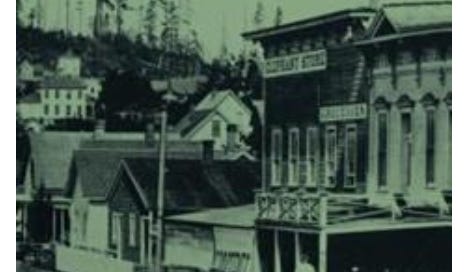1851 - 1907. After Seattle was founded, but before Pike Place Market.
As a kid, I remember knowing of Seattle. Vaguely. As a blurred spot in the upper left corner of the United States maps in my 6th grade social studies books. I had never heard of Henry Yesler, Doc Maynard, or Arthur Denny, though.
We did a West Coast road trip in a Volkswagen bus in the early 1970s when I was four, but my sister tells me we didn’t make it all the way to Seattle. Which means the first time I ever laid eyes on this place was in 1992 after I’d moved to Washington state as a young adult from my native Colorado.
As a kid, I also hated history. It was my least favorite subject. But then I started traveling in my 20s and grew to love it. And the older I get, the more I find it irresponsible – even disrespectful – to not know about the history of the place you inhabit. How can you expect to be a truly responsible citizen if you don’t know the context of a place? How it came to be and why it is the way it is? What its people care about. What motivates, inspires, and enlightens them. So to learn about Seattle’s history, I read a lot. As we move into Seattle’s founding, here are some books I’ve read and resources I’ve explored that I’d like to share with you:
“Skid Road tells the story of Seattle “from the bottom up,” offering an informal and engaging portrait of the Emerald City’s first century, as seen through the lives of some of its most colorful citizens. With his trademark combination of deep local knowledge, precision, and wit, Murray Morgan traces the city’s history from its earliest days as a hacked-from-the-wilderness timber town, touching on local tribes, settlers, the lumber and railroad industries, the great fire of 1889, the Alaska gold rush, flourishing dens of vice, the 1919 general strike, the 1962 World’s Fair, and the stuttering growth of the 1970s and ’80s. Through it all, Morgan shows us that Seattle’s one constant is change and that its penchant for reinvention has always been fueled by creative, if sometimes unorthodox, residents.”
A Clearing in the Distance: Frederick Law Olmsted and America in the 19th Century
I read this book while I lived in Baltimore, not expecting to learn much if anything about Seattle. But as it turns out, Seattle’s park system is one of the most comprehensive works of Frederick Law Olmsted’s landscaping practice, by that time taken over and operated by his sons. It is an incredible book, one of my favorite of all time. You should read it. And you should read this, too. A brief history of Seattle’s Olmsted parks.
If you don’t know history, then you don’t know anything. You are a leaf that doesn’t know it is part of a tree.
– Michael Crichton
The free online encyclopedia of Washington state history. I reference this again and again as it is often one of the top search results when I run a web query.
Our local news source. Lots of good stuff here. There’s also the online only SeattlePI.com.
And I found this A new-to-Seattle reading list, part 2, from this Seattle Newcomers Guide. And of course, the Seattle Public Library and the UW Special Collections. You can also discover a lot about Seattle’s founding through a quick Wikipedia search, but my goal is to tie a lot of info from these sources together through the lens of food. Because to learn about food is to learn about history, culture, politics, economics, geography, and humanity, all at once. To learn about food is the most efficient way to satisfy intellectual curiosity. It is a gateway to knowledge about everything. Which is why I love it.
Next Up





